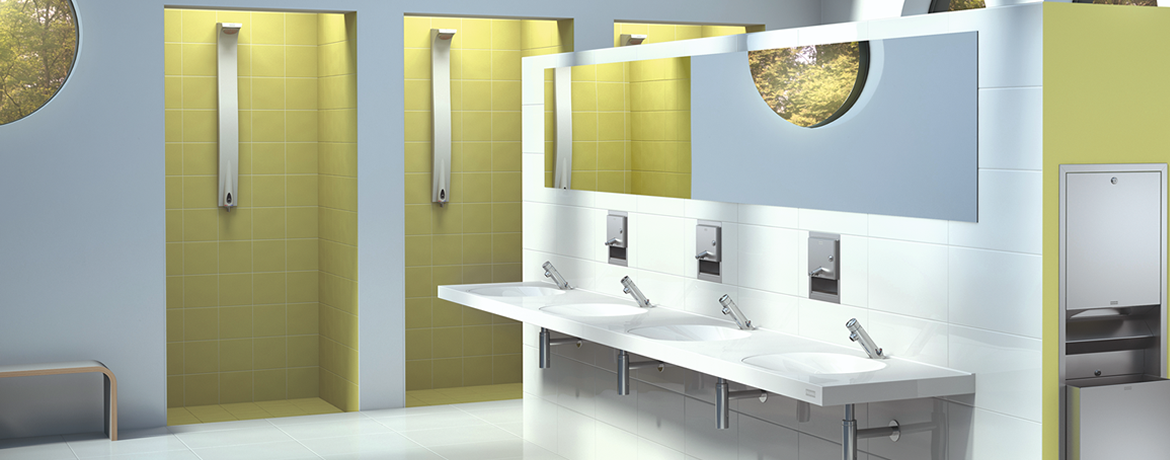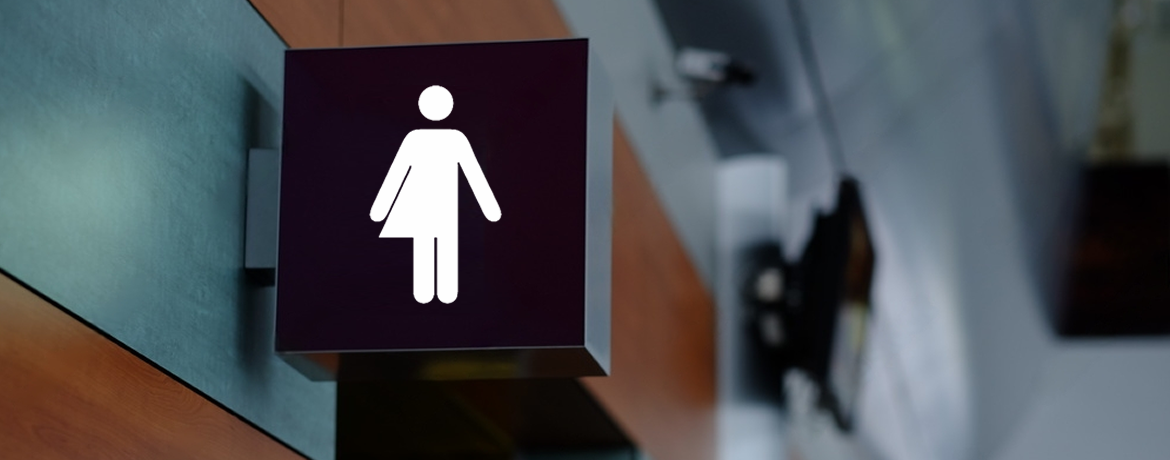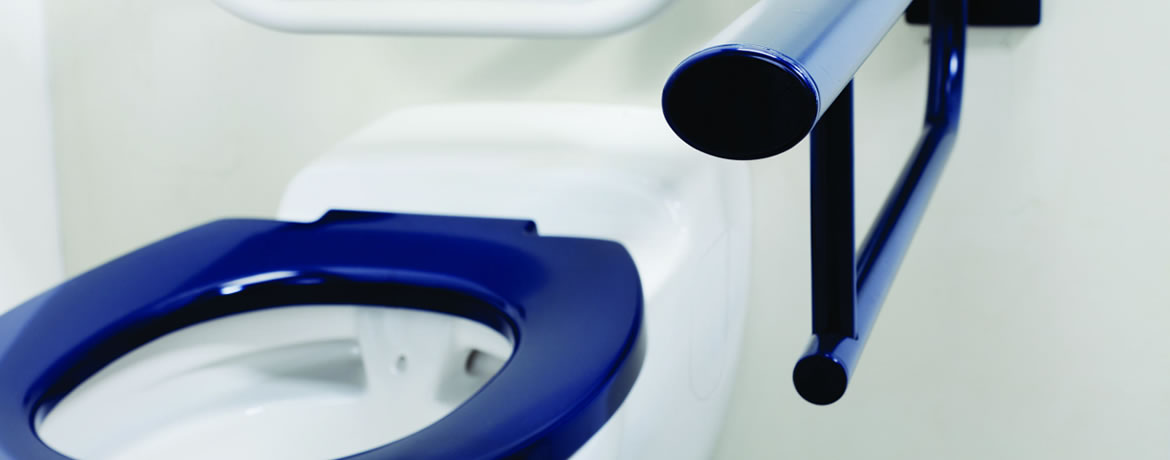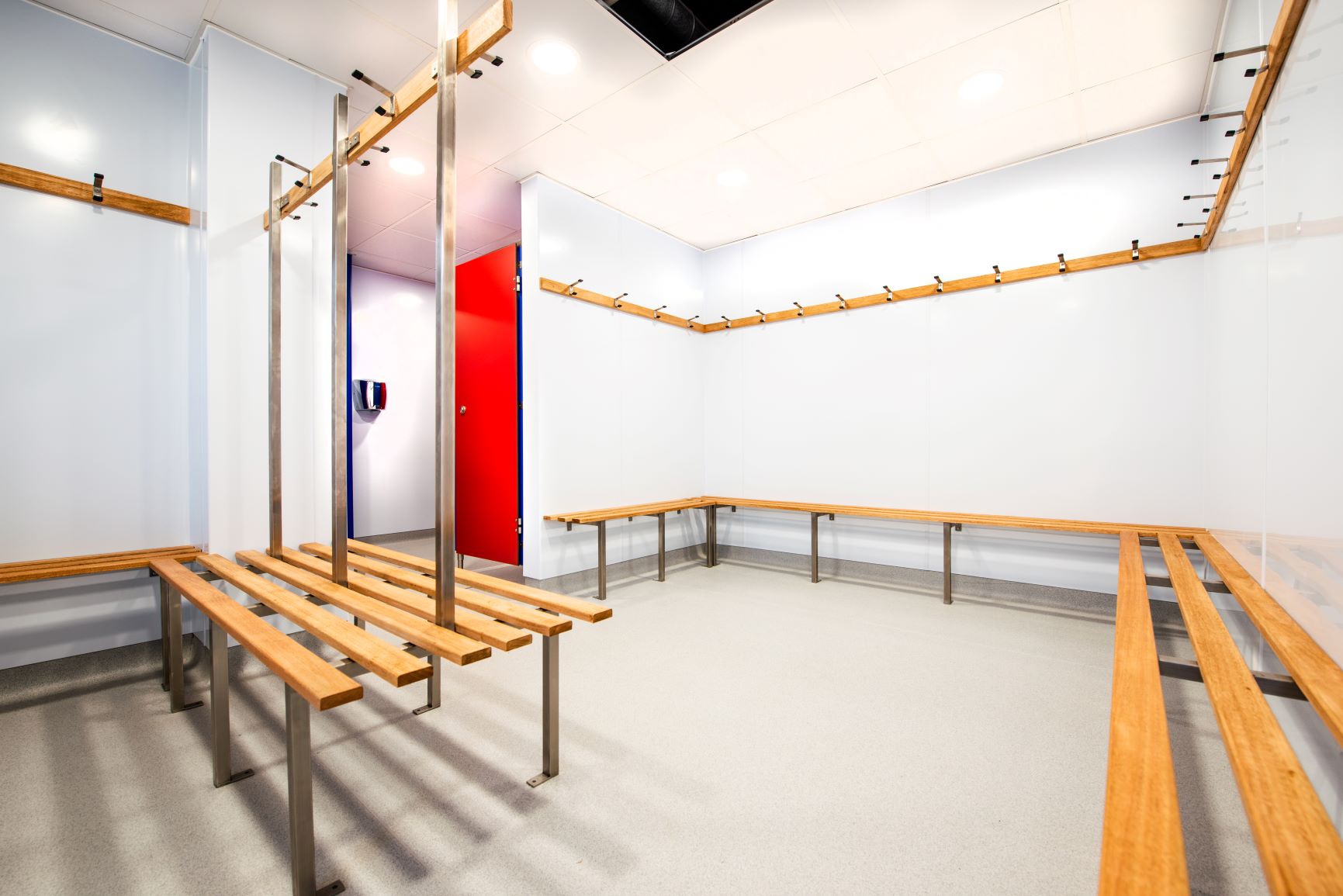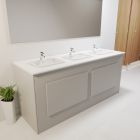Do you Tile Behind a Vanity Unit?
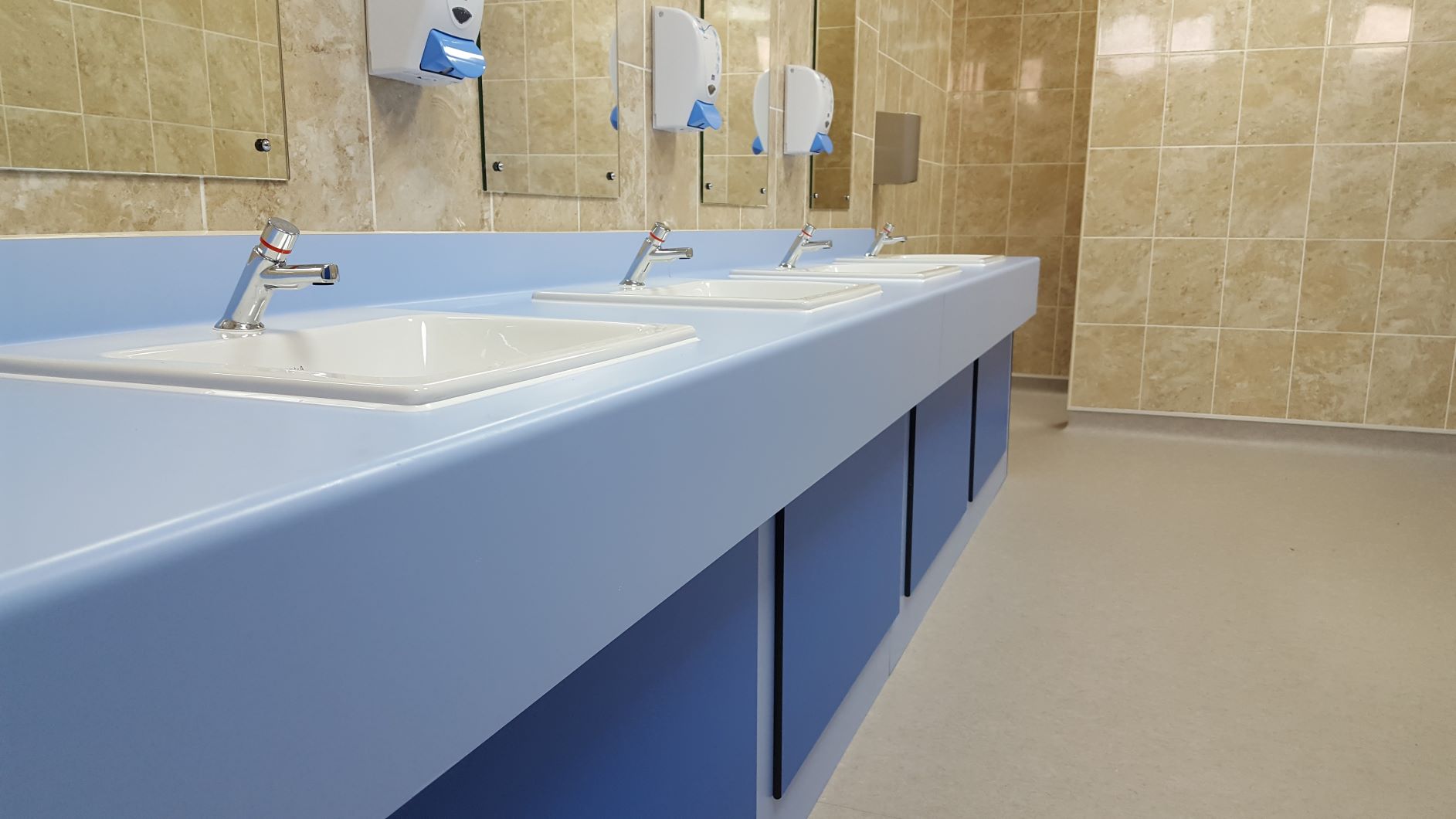
Updating and refurbishing your commercial washroom always comes with a number of factors that need to be considered when you’re in the planning stages. These factors range from where certain units should be positioned, to what will be involved in the finishing touches.
One of the products that you might be considering putting into your washroom is a Bathroom Sink Vanity Unit. If you’re planning to add a Bathroom Sink Vanity unit to your washroom, the wall cladding or wall tiling is an important factor to consider before buying and installing the unit. If you’re looking to use tiling rather than wall cladding in your washroom, you can read on for information on both tiling behind vanity units, and also what you will need to think about before beginning work and adding a vanity unit and tiling to your washroom.
Factors to Consider
Will you be doing any redesigns in the future? How much of the washroom are you planning on tiling? What type of vanity unit are you planning on installing? These are just some of the factors you’ll need to consider when deciding if you should tile behind your vanity units or not, and whether you decide to or not will also depend on the circumstances of the work you’re doing;
The Extent of the Tiling
For example, if you’re planning on tiling the whole of the washroom, we would recommend tiling behind the vanity unit and before installing it, as this means your washroom will be set for any changes you want to make to the design in the future.
Splashback Tiling
On the other hand, if you were just planning on adding a splashback to your vanity unit, rather than tiling the entire room, you can easily get away with tiling after the unit is installed. The splashback tiling will only need to sit behind the area of the Bathroom Sink Vanity Unit that could come into contact with water from the taps, so you’ll only need to tile a small space on the wall.
The Configuration of the Vanity Unit
In a commercial washroom, we recommend installing a Bathroom Sink Vanity Unit Underframe; so as to conceal the water and waste pipes. To do this, we generally use a material called Solid Grade Laminate which is very strong, durable, and impervious to water. The configuration of your vanity units is also a factor that you will need to consider; whether or not your vanity unit will be In a Corner (where one end of the unit will be built into the wall), Between Walls (where both ends of the unit are built into the wall) or Free-Standing (where both ends of the unit are exposed).
With all these configurations, the wall behind and below the vanity top is concealed using a vanity underframe; the underframe giving the added advantage of supporting the weight of the vanity top. Even with this underframe, you may consider tiling or cladding behind the vanity unit, as this can help to prevent any water damage to the unit in the event of a waste pipe blockage or leak.
To conclude, whether you tile behind the vanity unit in your washroom or not is entirely dependent on what your plan for the washroom is and what else you’ll be doing with it. It is not something you have to do, but you might find that it makes others part of the design process easier.
MORE TO EXPLORE IN Related Posts

Story Time Vanity Unit for Schools
As low as £348.00 £290.00

HPL Postformed Laminated Vanity Top
As low as £289.20 £241.00

Solid Surface Vanity Top with Moulded Corian Basins (Semi-Recessed)
As low as £876.00 £730.00

